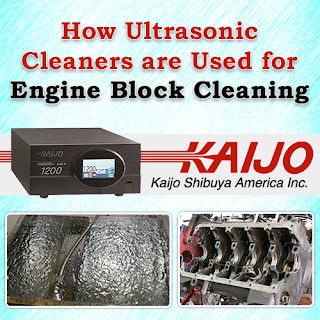Cleaning engine blocks with traditional methods can be difficult and time-consuming. Plus, they do not guarantee thorough cleaning. The use of ultrasonic technology to remove heavy surface grease and dirt from part surfaces is an attractive alternative to these traditional cleaning methods.
Automotive ultrasonic cleaners work by generating microscopic bubbles in the cleaning solution. The bubbles form and collapse in tune with the ultrasonic frequency. When they collapse, they create a tiny but energetic jet that strikes the engine block surface and dislodges deposits.
Low frequencies create comparatively larger cavitation bubbles and correspondingly powerful jets. The bubbles’ powerful cleaning action is suitable for robust parts with hard surfaces such as engine blocks.
Higher frequencies, on the other hand, create smaller cavitation bubbles and a gentler cleaning action. This makes these bubbles suitable for cleaning automotive parts with softer surfaces or delicate surface coatings to avoid pitting.
To clean the large automotive parts such as engine blocks, the parts have to be completely submerged in the cleaning solution. A suitable ultrasonic cleaning tank will hold the engine block with an allowance of several inches to facilitate the proper circulation of the cleaning solution and the cavitation bubbles, which form everywhere the cleaning solution can penetrate, even inside cavities and threaded holes. The complex shapes and surfaces that make an engine block hard to clean with traditional methods are easily cleaned by the cavitation bubbles in the ultrasonic cleaner.
Since automotive ultrasonic cleaners can quickly and efficiently remove heavy deposits from engine blocks and other automotive parts, they can provide significant benefits to automotive restoration and maintenance shops that use them. If they transition to ultrasonic technology, shops can achieve better cleaning performance, reduced costs, increased efficiency and a safer working environment.
For more details read the complete article titled “How Ultrasonic Cleaners Are Used for
Engine Block Cleaning”. If you have questions or you would
like to set up a free consultation, contact Kaijo via email at info@kaijo-shibuya.com or call 408-675-5575.

